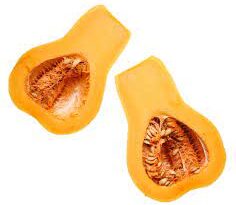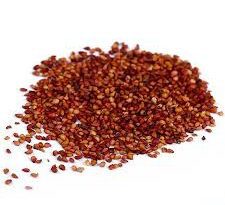The Coconut Inflorescence: Economic Importance, Uses, and By-Products
Coconut inflorescence refers to the flower-bearing portion of the coconut palm tree. It is also known as the spadix and is made up of numerous small flowers.
The spadix is a central stalk that grows up to a meter long and is located at the top of the tree. The coconut inflorescence is a crucial part of the coconut tree’s reproductive system. It is responsible for producing the coconut fruit, which is used in many different ways.
The coconut inflorescence is made up of both male and female flowers. The male flowers are located at the top of the spadix while the female flowers are located at the bottom. The male flowers produce pollen, which is carried by the wind to the female flowers for fertilization. This process is crucial for the production of coconuts.
The coconut inflorescence has a unique structure that allows it to perform its reproductive function effectively. The spadix is covered with a protective sheath called the spathe, which is made up of overlapping bracts. The spathe opens up to reveal the spadix and allows pollination to occur. The female flowers are located at the bottom of the spadix and are protected by a bract known as the prophyll.
Coconut inflorescence is an important part of many cultures and is used for various purposes. In some cultures, the sap from the coconut inflorescence is collected and used to make a sweet drink known as toddy. The sap is also used to make coconut sugar, which is a healthier alternative to traditional sugar.
The coconut inflorescence is also used in traditional medicine. The sap is believed to have medicinal properties and is used to treat a variety of ailments, including diabetes, high blood pressure, and skin conditions. The coconut inflorescence is also used in Ayurvedic medicine to treat respiratory problems and digestive issues.
The coconut inflorescence is an essential part of the coconut tree’s reproductive system. It is responsible for producing the coconut fruit, which is used in many different ways.
The unique structure of the spadix allows for efficient pollination and ensures that the coconut tree can continue to reproduce. The coconut inflorescence is also an important part of many cultures and is used in traditional medicine to treat a variety of ailments.
The Economic Importance and Uses of Coconut Inflorescence

1. Coconut Production: Coconut inflorescence is essential for coconut production as it contains the flowers that develop into coconuts. The successful pollination and development of these flowers are crucial for the overall yield of coconut palms.
2. Copra Production: Coconut inflorescence contributes to copra production, which is the dried kernel of the coconut used for extracting coconut oil. The flowers produce the coconut fruit, and the kernels from these fruits are processed to obtain copra.
3. Coconut Sugar Production: Coconut inflorescence sap is harvested to produce coconut sugar, a natural sweetener with growing popularity due to its health benefits and low glycemic index. The sap is collected from the inflorescence and processed into sugar through boiling and evaporation.
4. Vinegar Production: Coconut inflorescence sap can be fermented to produce coconut vinegar, which is commonly used in cooking, pickling, and food preservation. The sap undergoes fermentation with the help of acetic acid bacteria to convert it into vinegar.
5. Toddy Production: Coconut inflorescence sap, also known as toddy or palm wine, is tapped and collected for fermentation to produce an alcoholic beverage. Toddy tapping is a traditional practice in some regions and contributes to the local economy.
6. Handicrafts: Coconut inflorescence stalks and flowers are used in traditional handicrafts such as basket weaving, mat making, and ornamentation. They provide natural and sustainable materials for artisans to create a variety of products.
7. Traditional Medicine: Coconut inflorescence sap and extracts are used in traditional medicine systems for their medicinal properties. They are believed to have therapeutic benefits for various ailments such as coughs, colds, and digestive disorders.
8. Animal Feed: Coconut inflorescence stalks and flowers can be used as fodder for livestock such as cattle, goats, and poultry. They provide a nutritious feed supplement rich in carbohydrates, proteins, and vitamins.
9. Beekeeping: Coconut inflorescence flowers attract bees and other pollinators, making coconut plantations ideal locations for beekeeping activities. Beekeepers harvest honey from beehives located near coconut palms, contributing to honey production and pollination services.
10. Landscape Decoration: Coconut inflorescence stalks and flowers are used in landscaping for decorative purposes. They add a tropical touch to gardens, parks, and outdoor spaces when used in floral arrangements, bouquets, or as standalone decorations.
11. Soil Amendment: Coconut inflorescence sap and extracts can be used as organic fertilizers to enrich soil fertility and promote plant growth. They contain essential nutrients and trace elements that nourish plants and improve soil structure.
12. Cosmetics: Coconut inflorescence extracts are used in cosmetic formulations such as shampoos, conditioners, and skincare products. They provide moisturizing, nourishing, and revitalizing properties for hair and skin care.
13. Culinary Use: Coconut inflorescence sap can be used as a sweetening agent or flavoring ingredient in culinary preparations such as desserts, beverages, and sauces. It adds a unique and subtle coconut flavor to dishes.
14. Biomass Fuel: Coconut inflorescence stalks and flowers can be processed into biomass fuel for energy generation in biomass power plants, boilers, and stoves. They are shredded, chipped, or pelletized to produce heat and electricity.
15. Traditional Rituals: Coconut inflorescence flowers are used in traditional rituals, ceremonies, and religious offerings in many cultures. They symbolize purity, fertility, and prosperity, and are often used in auspicious occasions and rites of passage.
16. Traditional Crafts: Coconut inflorescence stalks and flowers are crafted into decorative items, sculptures, and artwork by skilled artisans. They are carved, shaped, and polished to create unique and intricate designs that showcase the natural beauty of the inflorescence.
17. Landscape Beautification: Coconut inflorescence flowers are used to enhance the aesthetic appeal of landscapes, gardens, and public spaces. They are planted as ornamental trees or shrubs, providing visual interest and beauty with their vibrant blooms.
Read Also: How to Control Feeding Struggle among Fishes in the same Pond
The Products and By-products That Can Be Derived From Coconut Inflorescence

1. Coconut Sugar: One of the primary products derived from coconut inflorescence is coconut sugar. The sap collected from the inflorescence is boiled down to form a thick syrup, which is then crystallized to produce coconut sugar. This natural sweetener is used in various culinary applications and is prized for its unique flavor and lower glycemic index compared to refined sugar.
2. Coconut Vinegar: Coconut inflorescence sap can also be fermented to produce coconut vinegar. The sap undergoes a natural fermentation process, where acetic acid bacteria convert the sugars into vinegar. Coconut vinegar is commonly used in cooking, pickling, and food preservation, and it offers a tangy flavor profile with subtle coconut undertones.
3. Toddy (Palm Wine): In regions where toddy tapping is practiced, coconut inflorescence sap is collected and fermented to produce toddy, also known as palm wine. This alcoholic beverage is enjoyed fresh and has a mild sweetness with a hint of coconut flavor. Toddy tapping is often a traditional occupation and contributes to local economies.
4. Handicraft Materials: The stalks and flowers of coconut inflorescence are utilized in traditional handicrafts and artisanal products. They are woven, braided, or fashioned into decorative items such as baskets, mats, ornaments, and sculptures. These handicraft materials showcase the natural beauty and versatility of coconut inflorescence.
5. Animal Feed: The stalks and flowers of coconut inflorescence can serve as nutritious fodder for livestock such as cattle, goats, and poultry. They are rich in carbohydrates, proteins, and vitamins, providing supplemental nutrition to animals and supporting their health and productivity.
6. Organic Fertilizer: Coconut inflorescence sap and extracts can be utilized as organic fertilizers to enhance soil fertility and promote plant growth. These natural fertilizers contain essential nutrients and micronutrients that nourish plants and improve soil structure, making them beneficial for sustainable agriculture practices.
7. Cosmetic Ingredients: Extracts derived from coconut inflorescence may find applications in cosmetic formulations such as shampoos, conditioners, and skincare products. These extracts offer moisturizing, nourishing, and revitalizing properties for hair and skin care, contributing to the development of natural and sustainable cosmetic solutions.
8. Traditional Medicine: Coconut inflorescence sap and extracts have been used in traditional medicine systems for their purported medicinal properties. They are believed to possess therapeutic benefits for various ailments such as respiratory issues, digestive disorders, and inflammatory conditions, although scientific evidence may be limited.
9. Landscape Decoration: Coconut inflorescence flowers and stalks can be utilized for landscape decoration purposes. They add a tropical touch to gardens, parks, and outdoor spaces when incorporated into floral arrangements, bouquets, or standalone decorative features, enhancing the aesthetic appeal of the surroundings.
10. Biomass Fuel: In some instances, the stalks and flowers of coconut inflorescence may be processed into biomass fuel for energy generation. They can be shredded, chipped, or pelletized to produce heat and electricity in biomass power plants, contributing to renewable energy production and reducing reliance on fossil fuels.
Read Also: Sudangrass (Sorghum × drummondii) Complete Guide
Frequently Asked Questions (FAQs) About Coconut Inflorescence

1. How is coconut inflorescence sap collected?
Coconut inflorescence sap is collected by tapping the flower stalks of coconut palms and collecting the dripping sap in containers. The sap is then processed into various products such as coconut sugar, vinegar, and toddy.
2. What is coconut toddy?
Coconut toddy, also known as palm wine, is the fermented sap collected from coconut inflorescence. It is a traditional alcoholic beverage produced in some regions by fermenting the sap with natural yeast and bacteria.
3. What are the health benefits of coconut sugar?
Coconut sugar is considered a healthier alternative to refined sugar due to its lower glycemic index and higher nutrient content. It contains vitamins, minerals, and antioxidants, making it a popular choice for health-conscious consumers.
4. Can coconut inflorescence be used in landscaping?
Yes, coconut inflorescence flowers and stalks are used in landscaping for decorative purposes. They add a tropical touch to gardens, parks, and outdoor spaces when used in floral arrangements or as standalone decorations.
5. How are coconut inflorescence products used in traditional medicine?
Coconut inflorescence sap and extracts are used in traditional medicine systems for their medicinal properties. They are believed to have therapeutic benefits for various ailments such as coughs, colds, and digestive disorders.
6. Is coconut inflorescence sap sustainable for harvesting?
Yes, coconut inflorescence sap can be sustainably harvested without harming the coconut palm. Tapping practices ensure that only a portion of the sap is collected, allowing the tree to continue producing flowers and fruits.
7. What are some culinary uses of coconut inflorescence sap?
Coconut inflorescence sap can be used as a sweetening agent or flavoring ingredient in culinary preparations such as desserts, beverages, and sauces. It adds a unique and subtle coconut flavor to dishes.
8. How is coconut inflorescence used in traditional rituals?
Coconut inflorescence flowers are used in traditional rituals, ceremonies, and religious offerings in many cultures. They symbolize purity, fertility, and prosperity, and are often used in auspicious occasions and rites of passage.
9. Can coconut inflorescence sap be used as fertilizer?
Yes, coconut inflorescence sap and extracts can be used as organic fertilizers to enrich soil fertility and promote plant growth. They contain essential nutrients and trace elements that nourish plants and improve soil structure.
10. What are some eco-friendly uses of coconut inflorescence products?
Coconut inflorescence products such as sap, sugar, and vinegar offer eco-friendly alternatives to conventional products. They are natural, renewable, and biodegradable, making them environmentally sustainable choices for consumers.
Read Also: The Ultimate Guide to Unlocking the Potential of Garbage Wastes








